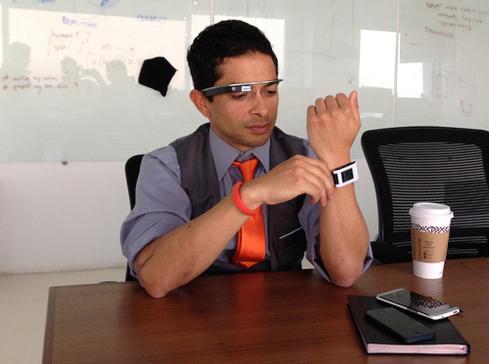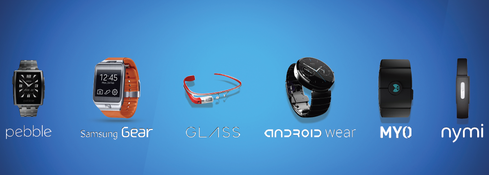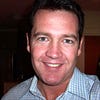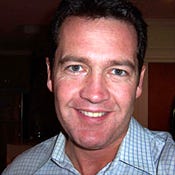Wearables In 2015: 4 PredictionsWearables In 2015: 4 Predictions
Smart glasses get put to the test in the enterprise, while smartwatches slowly woo consumers thanks to the Apple Watch.


Wearables At Work: 7 Productivity Apps
Wearables At Work: 7 Productivity Apps (Click image for larger view and slideshow.)
If 2014 was the year wearable technologies learned to walk, then 2015 is the year they'll run. And it's inside the enterprise where wearables will pick up speed.
In a Forrester Research survey of 3,000 global technology and business decision-makers, 68% said that wearables are a priority for their company, with 51% calling it a moderate, high, or critical priority.
Consumers haven't been as eager. Yet Forrester analysts say that in the coming year more consumers will turn their lonely eyes (and wrists) to wearables, spurred by the arrival of Apple Watch. Forrester predicts the Apple Watch will pull in 10 million users next year.
[The enterprise is the place for wearables innovation, but challenges loom for CIOs. Read Wearables In The Workplace: 3 Realities.]
So what are the big business and consumer trends that will define wearables in 2015? Consider these four predictions.
1. Smart glasses testing picks up in the workplace.
More CIOs realized in 2014 that the hands-free nature of smart glasses has the potential to improve efficiency for workers who use their bodies and hands. Think: manufacturing-floor technicians, construction workers, and doctors.
You won't find many hospital staffs using Google Glass every day, but the device is being actively tested for quick, hands-free access to patient records and vital signs. Boston's Beth Israel Deaconess Medical Center is the first hospital in the country to roll out Google Glass to an entire department for daily use. The rollout followed four months of pilot testing. At the hospital, an app designed for Glass can read a unique QR code in each patient's room and immediately access the patient's electronic medical record.
Figure 1: 
Another real-world example worth noting -- referenced in a recent Forrester wearables forecast report -- is Japan Airline's use of Google Glass to help maintenance crews inspect planes on the tarmac. The entire crew captures video and photos using Glass and sends them to a central office where technical safety pros evaluate the airplane's condition.
On the consumer side, Google Glass has created tension for being expensive and an invasion of privacy, but its hands-free capabilities are seen as a business asset in enterprise environments where price, social stigma, and privacy fears are less of a concern.
APX Labs, which created Skylight, a software platform for building business applications for smart glasses like Google Glass and the Epson Moverio, has been in the thick of enterprise adoption. CEO Brian Ballard considers 2014 a turning point.
"We've seen uptake in the field service, logistics, and manufacturing markets," said Ballard. For the first time, he said, companies are coming to APX after buying and testing Google Glass for employees.
"They know Google Glass works for them and are asking us to provide a platform they can build on," he said. "That never happened in 2013, and it bodes well for more testing in 2015 and future enterprise adoption of wearables."
2. Consumers and businesses warm up to smartwatches.
All eyes are on the Apple Watch to see if it energizes consumers the way the iPod and iPhone did.
"FitBit and Samsung have helped incite this growing interest [in wrist-based wearables], but Apple Watch has the best chance of turning wearables into a mass-market category," Forrester's J.P. Gownder wrote in a column for information.
Apple certainly has a flair for seizing trends at the right moment, and the timing is right for smartwatches. Even though products from Samsung (Galaxy Gear and Gear 2) and Motorola (Moto 360) have received a lukewarm response due to weak battery life and overreliance on a compatible smartphone, heavyweights like Google (with its Android Wear OS) and Salesforce.com (with its Salesforce Wear developer platform) are still betting on the future of wearable tech.
Yet the fact remains: Consumers haven't been buying up smartwatches. While Apple Watch has the advantage of Apple's marketing muscle and a built-in base of high-end customers, it is not a guaranteed winner, as it still relies on the iPhone for many features, and its battery life is a mystery. (Apple has avoided the subject.)
Nevertheless, a Forrester survey of 4,500 online US adults shows we're getting more curious about the smartwatch form factor in general -- 42% of respondents are interested in buying a wrist-based wearable, up from 28% in 2013. That rated higher than all other body locations offered in the

7 Cool Wearables For Pets
7 Cool Wearables For Pets (Click image for larger view and slideshow.)
survey, including the ear (headphones), the face (glasses), and the foot (clipped on a shoe).
And as it was with the iPhone, consumer adoption will carry over into work. Gownder predicts Apple Watches will slowly start showing up on employees' wrists, requiring an extension of a company's existing BYOD strategy.
3. Wearables app developers won't make money.
This may be a tough year for developers excited about wearables who are used to reaping financial rewards from successful smartphone apps, said Ballard of APX Labs.
Most mobile apps are either free with revenue coming from ads, or cost a dollar or two, and that model needs a huge user base to work -- something smart glasses and smartwatches don't have. "You won't see the next Candy Crush on Google Glass in 2015," said Ballard.
But there are still opportunities for app developers in the low-volume, but potentially high-paying, enterprise wearables space.
"A company could say to a developer, 'You did great job on our smartphone app, do you want to create the same app for Google Glass?' And they'll write the developer a contract," said Ballard.
"But that's very different from the 'app store' market where millions of smartphone users pick and choose."
4. Wearables expanding to clothes, pets, even pills.
Most of us think of glasses and wristwear when we think of wearable tech, but devices on or in clothing will ramp up in 2015, said Forrester's Gownder.
The wrist was the most popular body location in the aforementioned Forrester survey, but wearables clipped onto clothing were No. 2, with 35% saying they're interested. Nineteen percent of respondents said they're interested in wearables embedded in clothing.
"Ralph Lauren got the conversation going at this year's US Open [tennis tournament] by equipping ball boys with Polo Tech smart shirts," Gownder said. The Polo Tech shirts, designed for athletes, use built-in sensors to track the wearer's heart rate and movement, and send that data to a mobile app via a Bluetooth-enabled sensor in the shirt.
Other clothing-based wearables gaining interest among tech enthusiasts include Ducere's Lechal smart shoes and Wearable Experiments' Navigate jacket, which both use haptic feedback (vibrations) to give directions. The left or right smart shoe will vibrate, and the jacket will squeeze your left or right shoulder to indicate where to turn. Skeptics may see this as excessive tech and argue, somewhat justifiably, that walking directions are available via smartphone or smartwatch. But one of the goals of integrating tech, fashion, and fitness in 2015 and beyond is to make the wearable "invisible" -- to be heard or felt but not seen.
In the coming year, Forrester also sees wearable and Internet of Things (IoT) technology expanding past clothing and wrists and onto our pets via devices from FitBark and Voyce for activity tracking and remote monitoring; inside our bedrooms through devices like Withings Aura Smart Sleep System that tracks sleep; and even inside our bodies with a product like the PillCam, a pill-shaped camera that navigates a person's gastrointestinal track when swallowed.
With such a broad range, the name "wearables" may no longer suffice. How about Everywhereables?
Apply now for the 2015 information Elite 100, which recognizes the most innovative users of technology to advance a company's business goals. Winners will be recognized at the information Conference, April 27-28, 2015, at the Mandalay Bay in Las Vegas. Application period ends Jan. 16, 2015.
About the Author
You May Also Like






